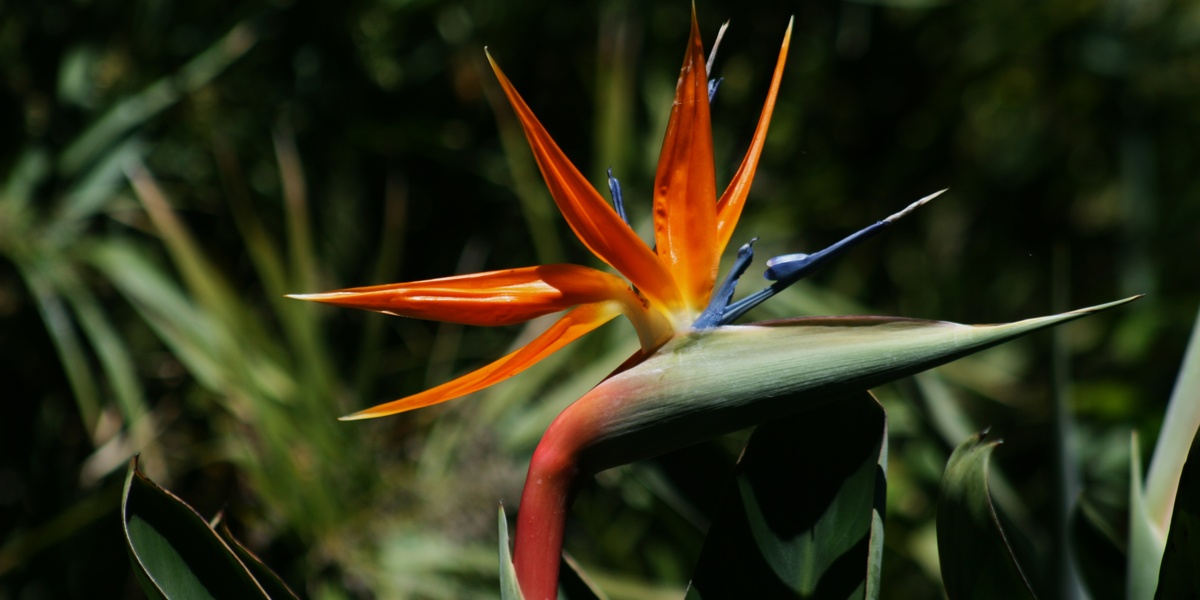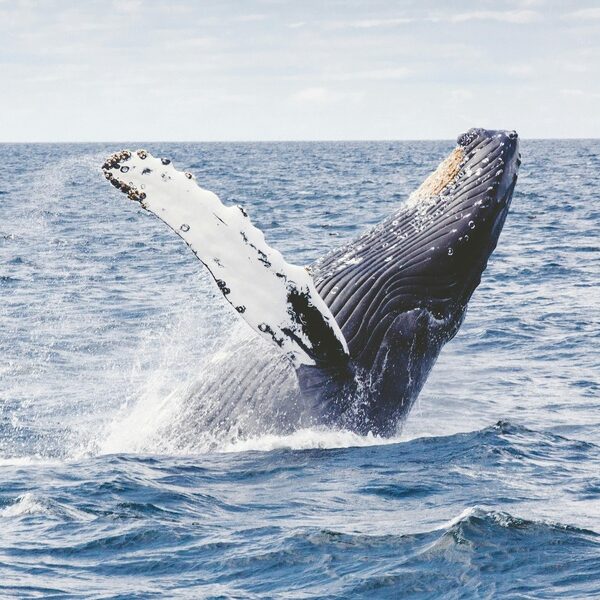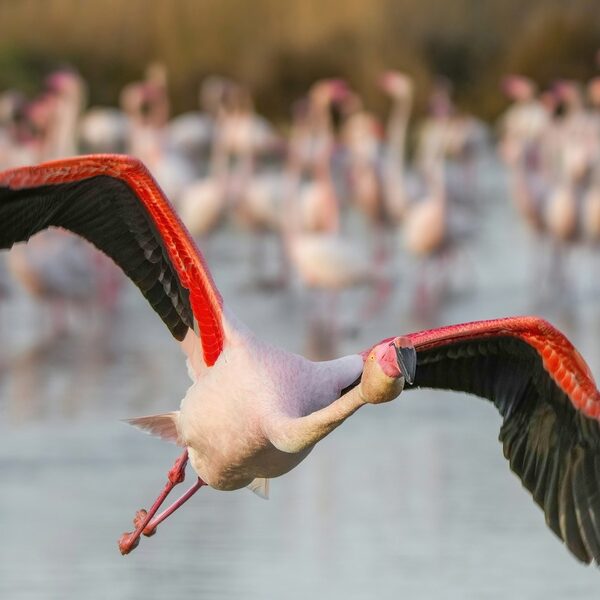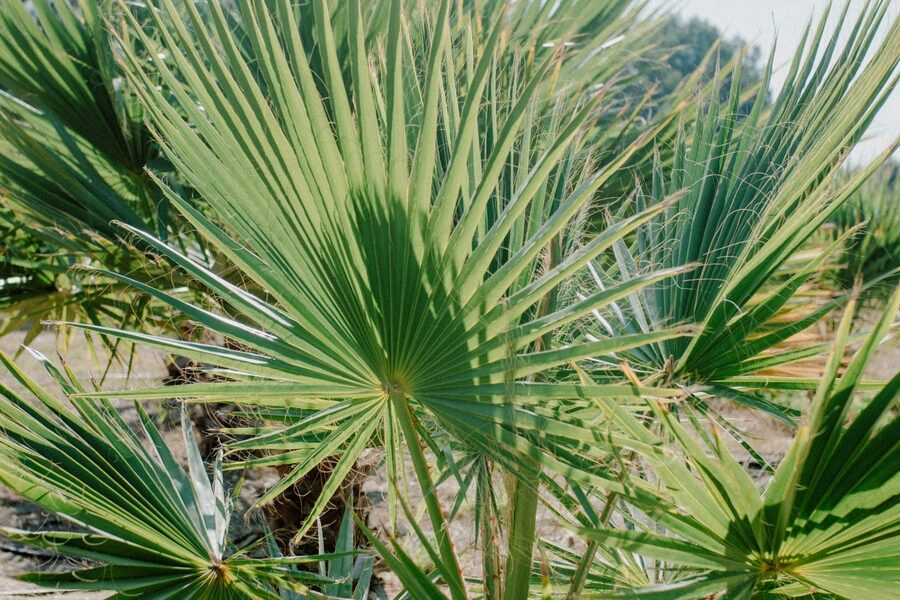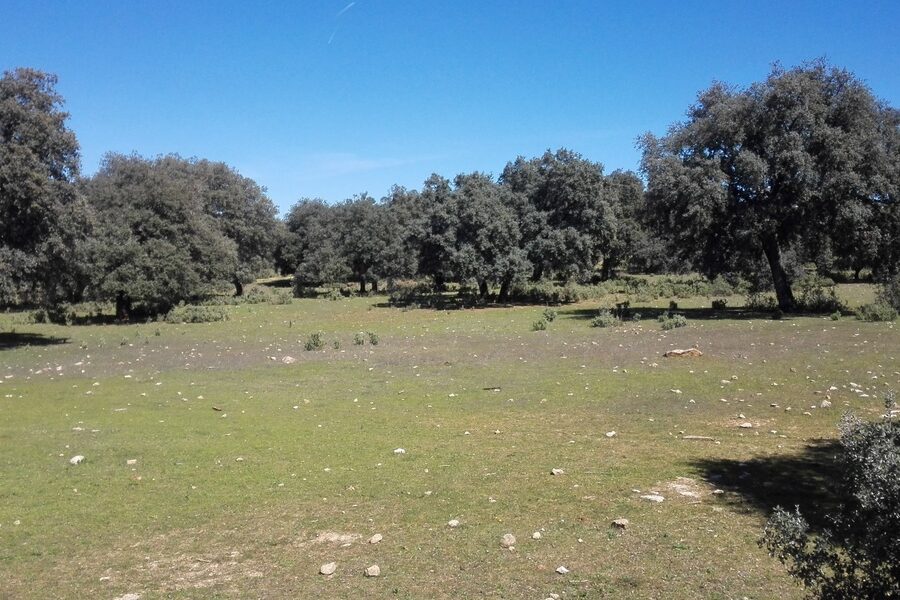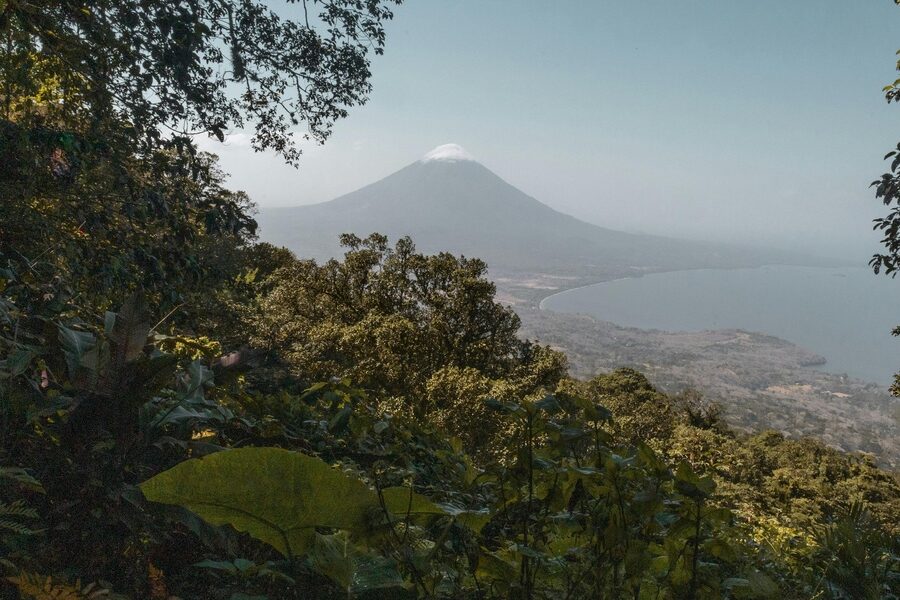From humid lowland rainforests to sunlit courtyard gardens, tropical plants shape landscapes across islands and coastal regions with dense foliage and varied forms. Whether you’re curating a garden, studying vegetation, or planning a trip, a clear list helps you recognize species and understand their needs.
There are 50 tropical flora, ranging from Areca palm to Victoria waterlily. Entries are organized under Scientific name,Native range,Height (m) so you can compare origin and mature size — you’ll find this information below.
How can I use the list to identify a plant I find in the field?
Start by noting leaf shape, growth habit and approximate height, then check the list for matching native range and scientific name; many entries include size cues that narrow possibilities. Use photos and local field guides alongside the list for confirmation.
Which of these species are okay for small gardens or containers?
Look for compact height entries and species native to disturbed or edge habitats, as they’re often more adaptable; palms like some Areca varieties suit containers, while large aquatic species like Victoria waterlily need ponds. Match light, soil and humidity requirements from the Native range entry before planting.
Tropical Flora
| Name | Scientific name | Native range | Height (m) |
|---|---|---|---|
| Mango | Mangifera indica | South Asia, now pantropical | 15 |
| Coconut | Cocos nucifera | Pantropical coastal regions | 20 |
| Banana | Musa acuminata | Southeast Asia, pantropical cultivation | 4 |
| Breadfruit | Artocarpus altilis | Pacific Islands, SE Asia | 12 |
| Jackfruit | Artocarpus heterophyllus | South Asia, Southeast Asia | 15 |
| Rubber tree | Hevea brasiliensis | Amazon Basin (Brazil, neighboring countries) | 25 |
| Kapok | Ceiba pentandra | Tropical Americas, West Africa, tropical Asia | 30 |
| Mahogany | Swietenia macrophylla | Neotropics (Mexico to Brazil) | 30 |
| Teak | Tectona grandis | South & Southeast Asia | 30 |
| Oil palm | Elaeis guineensis | West and Central Africa (native) | 20 |
| Areca palm | Areca catechu | South & Southeast Asia | 15 |
| Royal palm | Roystonea regia | Caribbean, Central America | 25 |
| Guadua bamboo | Guadua angustifolia | Tropical Americas (Andes to Amazon) | 20 |
| Rubber fig | Ficus elastica | Northeast India, SE Asia | 25 |
| Banyan | Ficus benghalensis | Indian subcontinent | 20 |
| Strangler fig | Ficus aurea | Caribbean, Central America, Florida | 15 |
| Heliconia (Lobster claw) | Heliconia rostrata | Andean foothills to Central America | 2 |
| Sea hibiscus | Hibiscus tiliaceus | Pantropical coasts | 8 |
| Frangipani | Plumeria rubra | Mexico, Central America, Caribbean | 5 |
| Vanilla | Vanilla planifolia | Mexico, Central America | 6 |
| Cacao | Theobroma cacao | Amazon Basin, Central America | 6 |
| Coffee | Coffea arabica | Highland Ethiopia, tropical Africa | 3 |
| Red ginger | Alpinia purpurata | New Guinea, Pacific Islands | 2 |
| Staghorn fern | Platycerium bifurcatum | Southeast Asia, Australia | 0.60 |
| Spanish moss | Tillandsia usneoides | Neotropics (southeast US to Argentina) | 3 |
| Soursop | Annona muricata | Neotropics | 7 |
| Rambutan | Nephelium lappaceum | Southeast Asia | 12 |
| Lychee | Litchi chinensis | Southern China, SE Asia | 12 |
| Durian | Durio zibethinus | Southeast Asia | 25 |
| Mangosteen | Garcinia mangostana | Southeast Asia | 10 |
| Noni | Morinda citrifolia | Pantropical (Pacific & Indian Oceans) | 4 |
| Sandalwood | Santalum album | Southern India, parts of SE Asia | 7 |
| Kava | Piper methysticum | Pacific Islands | 1.50 |
| Tahitian chestnut | Inocarpus fagifer | Pacific Islands | 15 |
| Red mangrove | Rhizophora mangle | Neotropical coasts, Caribbean | 8 |
| Avocado | Persea americana | Central America, Mexico | 12 |
| Guava | Psidium guajava | Tropical Americas | 6 |
| Passionfruit | Passiflora edulis | Brazil and surrounding South America | 4 |
| Bougainvillea | Bougainvillea spectabilis | Brazil | 6 |
| Cinnamon | Cinnamomum verum | Sri Lanka, southwestern India | 12 |
| Pandanus | Pandanus tectorius | Pantropical coastal zones | 8 |
| Nepenthes (pitcher plant) | Nepenthes alata | Philippines | 3 |
| Victoria waterlily | Victoria amazonica | Amazon Basin | 0.20 |
| Sago palm | Metroxylon sagu | New Guinea, SE Asia | 20 |
| Taro | Colocasia esculenta | Tropical Asia, widely cultivated | 0.80 |
| Guzmania (bromeliad) | Guzmania lingulata | Neotropics (Central & South America) | 0.60 |
| Cattleya (orchid) | Cattleya labiata | Brazil (Atlantic forests) | 0.30 |
| Sea grape | Coccoloba uvifera | Caribbean, tropical Americas | 6 |
| Entada (sea heart) | Entada gigas | Pantropical coasts and forests | 30 |
| Calathea | Calathea orbifolia | Bolivia (tropical South America) | 0.60 |
Images and Descriptions
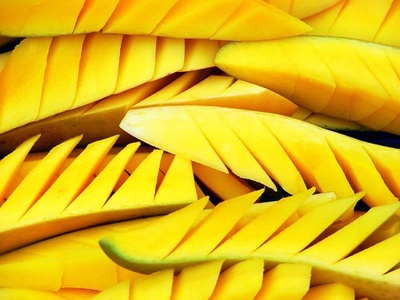
Mango
A familiar tropical fruit tree with glossy leaves and fragrant spring flowers, producing large sweet orange flesh fruits. Grows well in warm climates up to 15 m tall. Valued for fresh fruit, jams, and durable timber in local crafts.
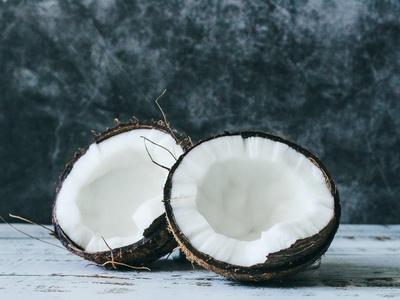
Coconut
Iconic coastal palm with a tall, slender trunk and feather-like fronds; recognizable by large fibrous coconuts. Reaches about 20 m in cultivation. Extremely useful: food, oil, fiber, drink, and building material across tropical shorelines worldwide.

Banana
A herbaceous “tree” with a pseudostem of layered leaves and hanging hands of sweet fruit; easy to spot by large smooth leaves. Typically around 4 m tall. Staple food crop, eaten fresh, cooked, or processed into chips and fiber.
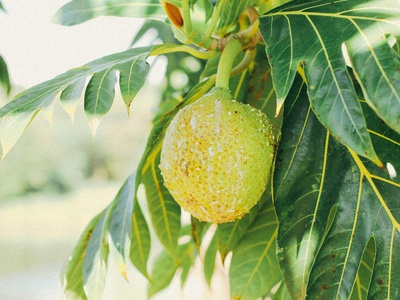
Breadfruit
A spreading tropical tree with large lobed leaves and starchy round fruits used like a vegetable. Grows about 12 m tall and is a cultural staple across the Pacific. Recognizable by bumpy green fruit and milky sap when cut.
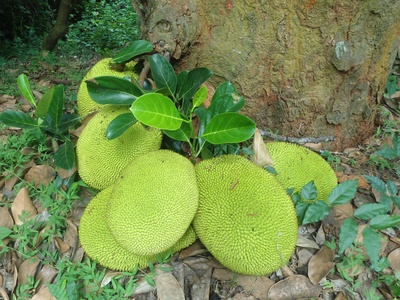
Jackfruit
Huge-fruited evergreen tree with leathery leaves and massive oblong fruits that can exceed a meter. Typically around 15 m tall. Fruit is eaten ripe or unripe as a meat substitute; wood and seeds are also used locally.
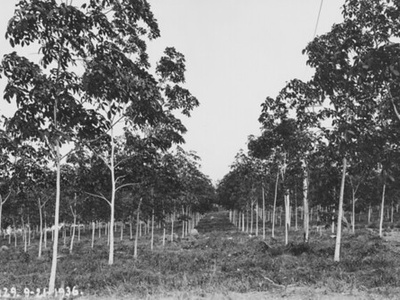
Rubber tree
Tall tropical tree with pale bark and milky latex tapped for natural rubber. Reaches about 25 m in plantations. Leaves are trifoliate when young; latex is economically important but plantations can impact biodiversity.
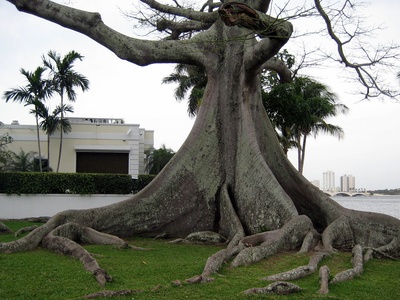
Kapok
Large emergent tree with a swollen trunk and palmate leaves, producing pods filled with silky kapok fibers and big white flowers. Grows to about 30 m. Fibers used for stuffing; culturally significant in many tropical societies.

Mahogany
A large canopy tree with pinnate leaves and valuable reddish timber prized for furniture. Typically around 30 m tall. Flowers are inconspicuous; overharvesting has made conservation and legal trade important for this classic tropical timber.

Teak
Fast-growing tropical hardwood tree with large drooping leaves that turn golden in dry season. Grows to around 30 m. Highly valued timber for outdoor furniture and shipbuilding; native forests have been widely converted to plantations.
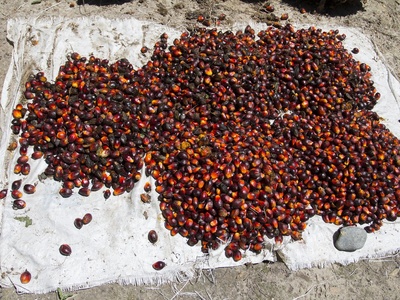
Oil palm
A single-stemmed palm with pinnate fronds and dense clusters of orange fruit bunches that yield edible oil. Around 20 m tall at maturity. Economically critical for vegetable oil, but expansion has environmental impacts in many tropics.
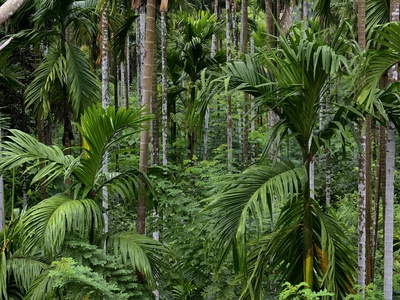
Areca palm
Slender trunked palm with feathery fronds and orange-yellow betel nuts. Grows to about 15 m. The areca nut is chewed culturally across Asia and the Pacific and has both cultural and health implications.
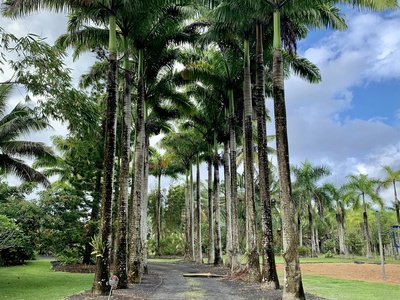
Royal palm
Tall, elegant palm with smooth grey trunk and a regal crown of large pinnate leaves; usually about 25 m tall. Often planted as an ornamental in tropical cities and coastal areas, instantly recognizable by its stately silhouette.
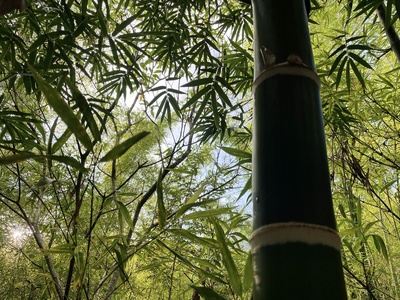
Guadua bamboo
A giant clumping bamboo forming thick woody culms up to 20 m high and used like timber. Fast-growing and structurally strong, it’s important for construction, fencing and erosion control in tropical American landscapes.
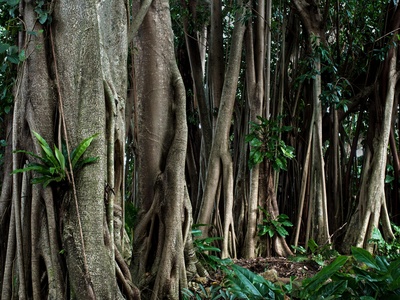
Rubber fig
Evergreen fig tree with large glossy leaves and aerial roots; often seen as an urban and forest species reaching about 25 m. Produces figs eaten by wildlife; many ornamental cultivars exist but the wild species is native to SE Asia.
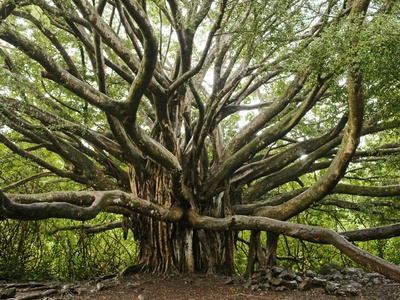
Banyan
A massive fig tree known for aerial prop roots that form secondary trunks and huge spreading canopies, commonly around 20 m tall with extended lateral spread. Sacred in many cultures and provides extensive habitat for birds and mammals.
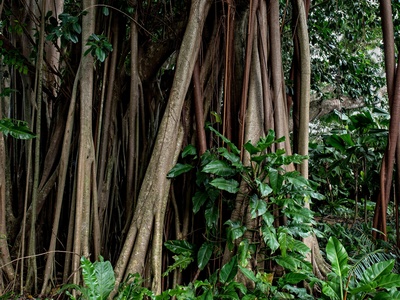
Strangler fig
Starts life as an epiphyte and often strangles its host as it grows into a freestanding canopy tree roughly 15 m tall. Produces figs that attract wildlife; distinctive for aerial roots and complex growth habit in humid tropics.
Heliconia (Lobster claw)
Herbaceous perennial with dramatic hanging, colorful bracts often red and yellow; leaves resemble bananas and the plant reaches around 2 m tall. Attracts hummingbirds and is widely cultivated for tropical floral displays and landscaping.
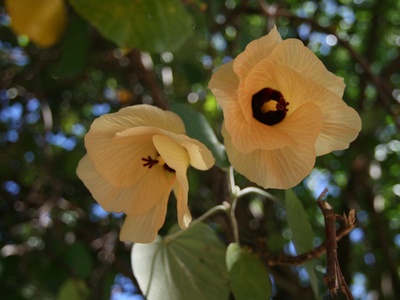
Sea hibiscus
Salt-tolerant coastal tree or shrub with heart-shaped leaves and large yellow hibiscus flowers that age to orange. Grows to about 8 m and stabilizes shorelines; used traditionally for cordage, shade, and ornamental planting.
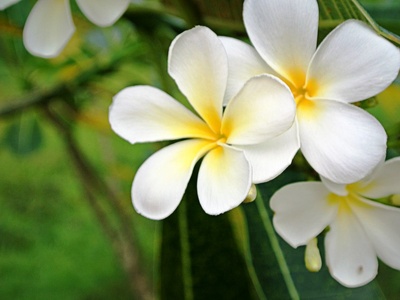
Frangipani
Small deciduous tropical tree with waxy, fragrant flowers used in leis and perfumery; glossy terminal leaves and a short branching habit reaching about 5 m. Popular ornamental across tropics and valued for scent and cultural uses.
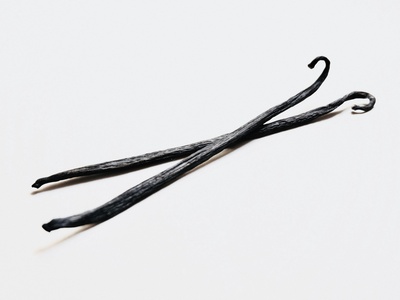
Vanilla
A climbing orchid vine with fleshy green stems and fragrant capsular pods that produce vanilla flavor. Climbs around 6 m on supports or trees. Hand-pollination is often required in cultivation; beans are used worldwide as a spice and aroma source.
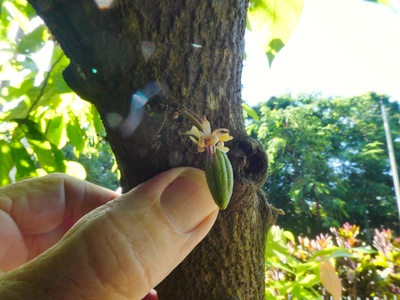
Cacao
Small understorey tree with paddle-shaped leaves and colorful pod fruits that contain cocoa beans. Typically grows to about 6 m. Beans are fermented and processed into chocolate; tree flowers and pods often develop directly on trunk (cauliflory).

Coffee
A shrub or small tree with glossy opposite leaves and fragrant white flowers; typically pruned to about 3 m in cultivation. Produces red berries containing coffee beans essential to the global beverage industry, often grown at elevation in the tropics.
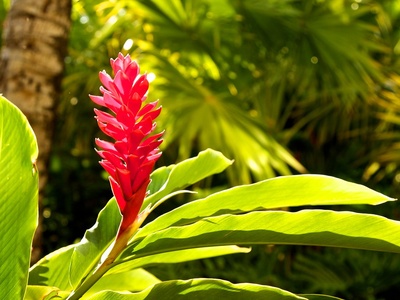
Red ginger
Tropical herb with broad leaves and striking upright red bracts that persist like flowers; usually reaches about 2 m. Popular in floral arrangements and gardens; rhizomes are aromatic and related to culinary gingers.
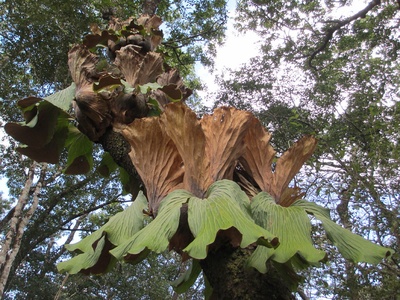
Staghorn fern
An epiphytic fern with distinctive forked fronds resembling antlers, forming nesting basal fronds that collect debris. Fronds spread to about 0.6 m. Grows on trees in humid forests and is a popular ornamental mounted plant.
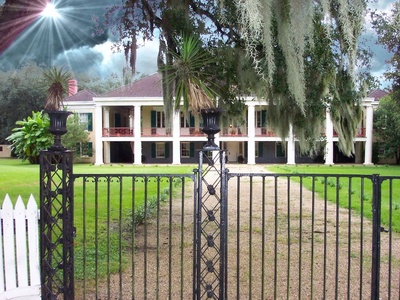
Spanish moss
A gray-green air plant that hangs in long tassels from tree branches and lacks true roots in the usual sense; strands can reach around 3 m. Not a parasite but an epiphyte that absorbs moisture and nutrients from air.
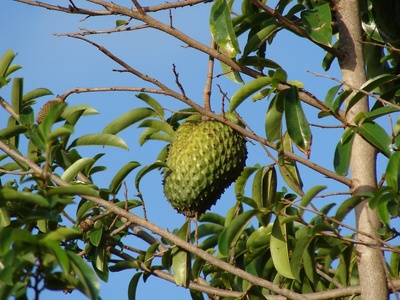
Soursop
Small tropical tree with glossy lobed leaves and large spiky green fruits that yield aromatic, tangy white pulp. Grows to about 7 m. Fruit is eaten fresh or in beverages and has traditional medicinal uses in many regions.
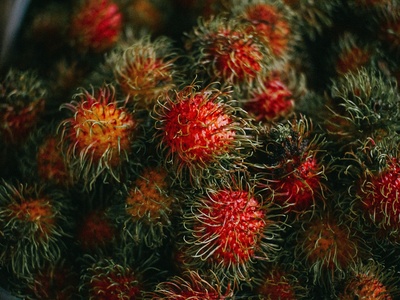
Rambutan
Evergreen tree bearing distinctive hairy red or yellow fruits with sweet translucent flesh; typically grows to around 12 m. A close relative of lychee and longan, rambutan is an important fresh fruit crop in Southeast Asia and tropical orchards.
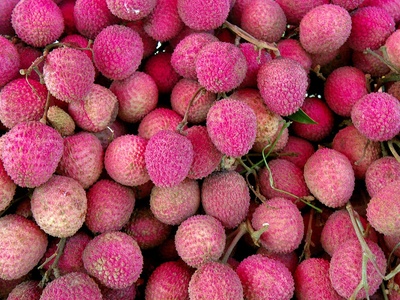
Lychee
Small evergreen tree with dense foliage and clusters of bumpy red fruits containing fragrant translucent arils. Reaches about 12 m. A prized tropical fruit eaten fresh or preserved; trees prefer warm, humid climates with defined dry periods.
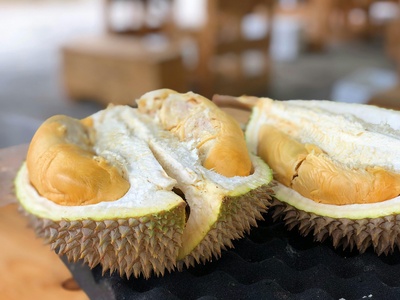
Durian
Large canopy tree with massive spiky fruits known for a powerful odor and rich custardy flesh much loved in SE Asia. Grows to roughly 25 m. Fruit is a cultural delicacy; trees produce showy flowers pollinated by bats or large insects.
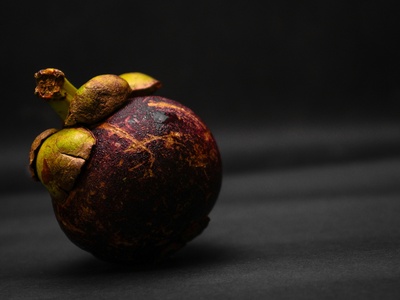
Mangosteen
Evergreen fruit tree with glossy leaves and round deep-purple fruit containing sweet-sour segments. Typically grows to about 10 m. Known as a high-value tropical fruit, often called the “queen of fruits” in its native range.
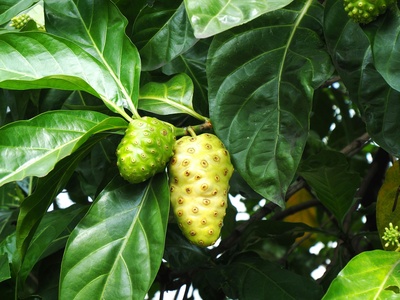
Noni
A small, hardy shrub or tree with pungent fruit used traditionally for medicine and dye. Grows to around 4 m and tolerates poor soils and coastal exposure. Leaves and juice are used in many island cultures for remedies.
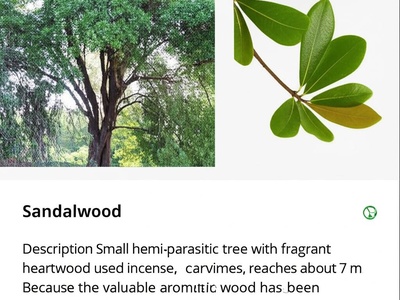
Sandalwood
Small hemi-parasitic tree with fragrant heartwood used for incense, carving, and perfume; reaches about 7 m. Because the valuable aromatic wood has been overexploited, many populations are now managed or protected.
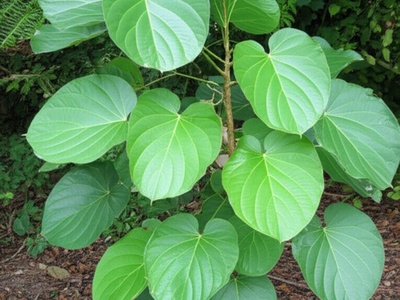
Kava
A stout perennial shrub with heart-shaped leaves and woody stems, typically 1.5 m tall. Roots are harvested and prepared as a traditional mild sedative drink across the Pacific; culturally significant in ritual and social contexts.
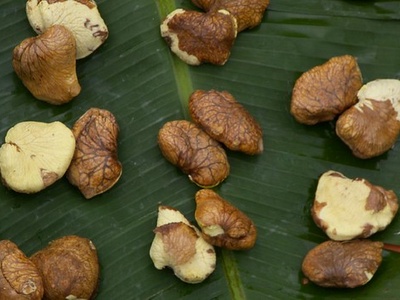
Tahitian chestnut
Medium to large spreading tree producing edible nuts in pods; grows about 15 m tall and is a staple in many Pacific island agroforestry systems. Tolerant of coastal soils and used for food, timber, and shade.
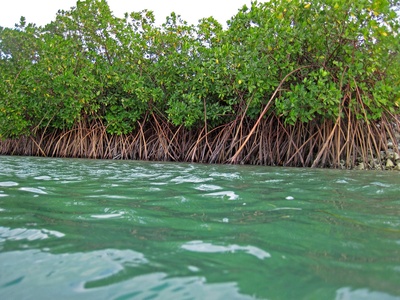
Red mangrove
Salt-tolerant coastal tree with distinctive arching prop roots and viviparous propagules; typically about 8 m tall. Forms dense shorelines that protect against erosion and provide vital nursery habitat for fish and invertebrates.
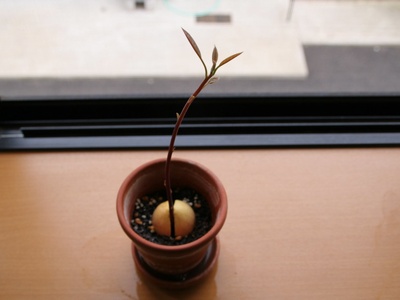
Avocado
Evergreen tree with shiny elliptic leaves and large creamy fruits containing a single seed. Reaches around 12 m in natural settings. Avocado is an economically important fruit for fresh markets and oil, with numerous regional varieties.
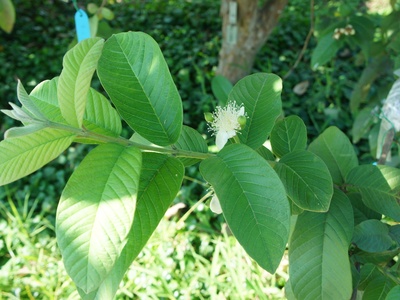
Guava
Small fruiting tree with rough bark and aromatic white flowers, producing round pulse-like sweet fruit. Typically about 6 m tall. Common in home gardens across the tropics, used fresh, cooked, or processed into jellies and beverages.
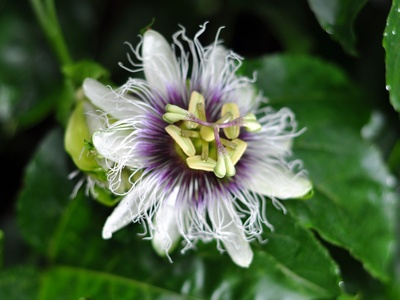
Passionfruit
A vigorous climbing vine with distinctive fringed flowers and round to oval purple or yellow fruits filled with pulpy seeds. Climbs to about 4 m on supports. Fruit is tangy and widely used in juices, desserts, and flavorings.
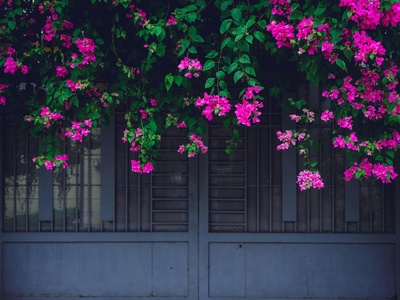
Bougainvillea
Woody climbing shrub with thorny stems and showy papery bracts surrounding small flowers; typically reaches about 6 m on supports. Very popular as a drought-tolerant ornamental in tropical gardens and public landscapes.
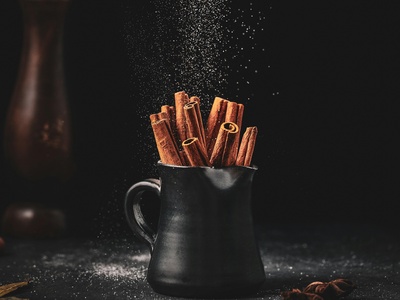
Cinnamon
Small to medium evergreen tree with aromatic bark harvested as cinnamon spice; usually around 12 m tall in the wild. Bark peels into quills used in cooking and traditional medicine; leaves are also fragrant and used in infusions.
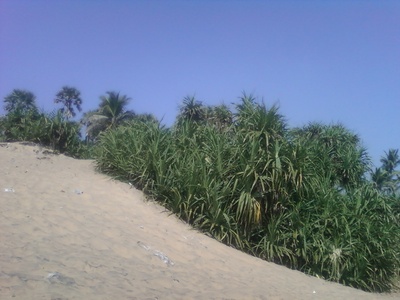
Pandanus
A distinctive coastal screwpine with prop roots and long straplike leaves, forming low to medium trees about 8 m tall. Fruits are large compound drupes; leaves traditionally used for weaving, thatch, and flavoring in Pacific cuisines.
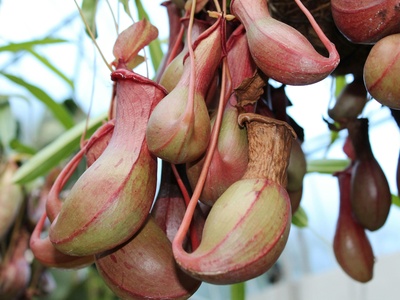
Nepenthes (pitcher plant)
Tropical carnivorous vine or scrambling plant with pitfall pitcher traps hanging from modified leaves, used to capture insects. Grows to about 3 m in length on hosts or supports. Attractive and specialized for nutrient-poor forest soils.
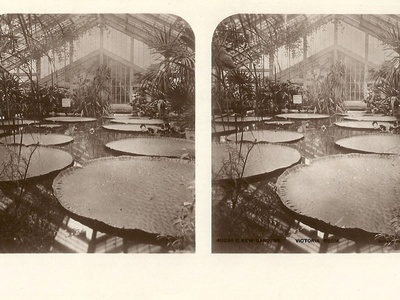
Victoria waterlily
A giant floating waterlily with circular leaves up to several meters across and fragrant night-blooming flowers; the plant’s above-water height is about 0.2 m. Iconic in Amazonian lakes and cultivated in botanical collections for dramatic pads and blooms.
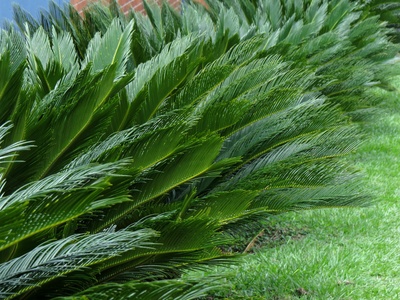
Sago palm
A large trunked palm whose starch-rich pith is processed into sago, an important staple food. Reaches around 20 m. Cultivated in swamps and managed groves; trunk and leaves have multiple traditional uses.
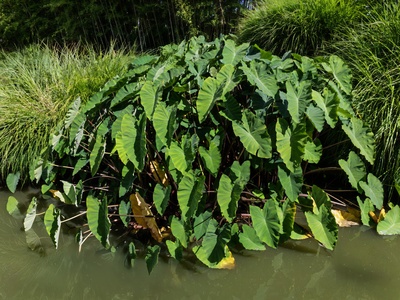
Taro
A perennial herb with large heart-shaped leaves and underground corms that are a major starchy staple in many tropical cuisines. Grows about 0.8 m tall. Corms must be cooked to remove irritant compounds before eating.
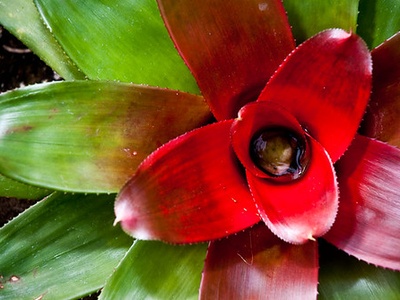
Guzmania (bromeliad)
A rosette-forming epiphytic or terrestrial bromeliad with bright central flower bracts and smooth strap-like leaves; reaches about 0.6 m tall. Often grown as an ornamental houseplant and enjoyed for long-lasting inflorescences.
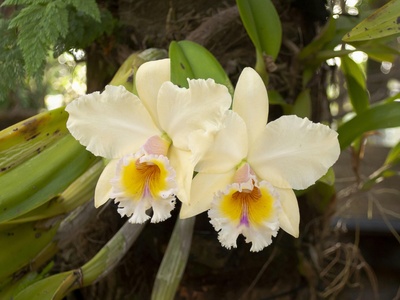
Cattleya (orchid)
Showy epiphytic orchid with large colorful lip and fragrant flowers, typically forming small clumps about 0.3 m high. A classic tropical orchid prized in horticulture for dramatic blooms and hybridization history originating from Brazilian forests.
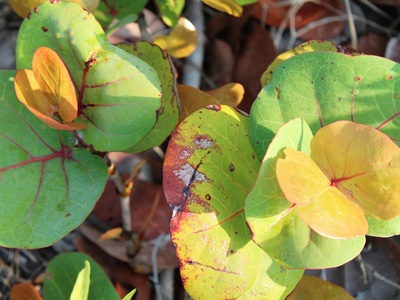
Sea grape
Coastal shrub or small tree with leathery rounded leaves and clusters of translucent grape-like fruits. Grows to about 6 m and is salt tolerant, commonly used for dune stabilization and ornamental seaside windbreaks.
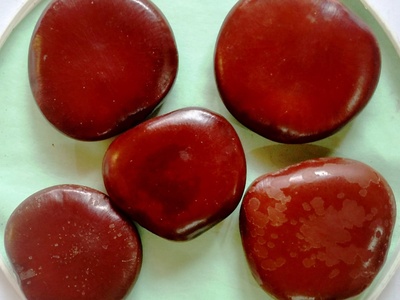
Entada (sea heart)
Massive woody liana capable of climbing into forest canopies with stems and pods that float long distances; lianas can exceed 30 m in length. Produces large heart-shaped seeds that disperse across oceans and are used as jewelry or toys.
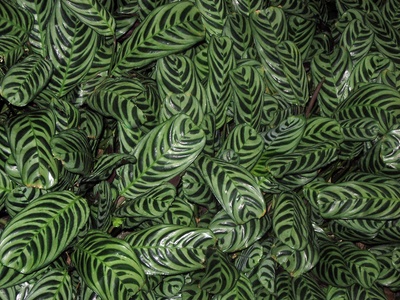
Calathea
Shade-loving perennial with large rounded striped leaves that fold at night, making it a popular tropical understory plant and houseplant. Reaches about 0.6 m tall. Valued for dramatic foliage and grown in humid, shaded tropical gardens.
